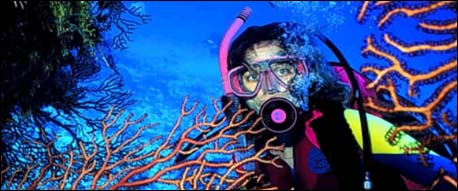
SPONSORED
LINKS
Dive Spots
Divers seek locations where the water is clear, the temperatures warm, and the marine life plentiful. Divers choose to visit areas with coral reefs because they are colorful and dense with life, and provide shelter for many types of fish. Popular dive spots such as coral reefs and wrecks are typically not near land, most diving is done from boats.
The Caribbean is the most popular destination in the world. Parts of the region are designated as marine parks or sanctuaries. Because they are protected from fishing and other human activity, these locations boast abundant aquatic plant and animal life. Similar protected areas exist throughout the world, and the South Pacific, the Indian Ocean, and the Red Sea are common dive destinations.
Indian Islands
The surface waters of the Indian Ocean here are warm and clear with its flora and fauna are an irresistable invitation to the scuba diving fraternity of the world. The exquisite coral formations, atolls and the large variety and number of coral fish, harmless sharks, mantarays, moray eels and turtles, make diving here an addictive experience.
Atolls
Atolls are found in tropical and subtropical seas, especially in the Pacific and Indian oceans. The most important groups of atolls in the Indian Ocean are the Maldives and the Lakshadweep (Laccadive Islands). Believed to form on the flanks of an underwater volcano, an atoll may project above the surface of the water either as a single island or as a chain of islets. Most of them lies just below the surface of the water and is often exposed by waves and tides. Ring-shaped coral reefs surrounding a lakelike body of water, form the atolls and these reefs provide natural defense against wind and wave action, on these delicate islands. The word atoll comes from the Divehi language, which is spoken in the Maldives in the Indian Ocean.
Current
Ocean waters are constantly on the move. Currents flow in complex patterns affected by Earth's rotation, strong seasonal winds, water's salinity, heat content, and bottom
topography.
OTHER PAGES
6

|